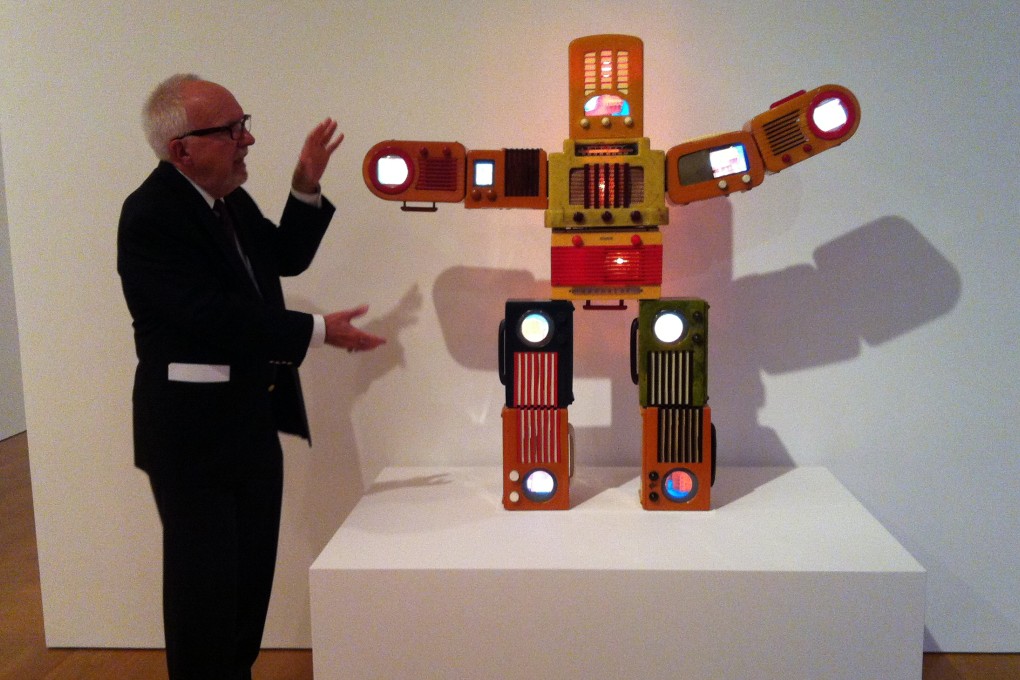Nam June Paik Hong Kong retrospective shows an artist fascinated and frightened by new media and technology
Gagosian Gallery presents first show in Hong Kong of work by the late Korean, a member of the influential Fluxus movement

“Nam June Paik: The Late Style” at the Gagosian Gallery is a concise and illuminating summary of the late Korean artist’s works, featuring some of his best known pieces such as TV Chair (1968) as well as more self-reflective pieces from his final years that have never been shown before.
Paik had a stroke in 1996 and was wheelchair-bound for the last 10 years of his life, yet he remained prolific until the end. Eleven out of the 19 pieces on show in the gallery in Pedder Building, Central, were made in 2005, the year before he died in the US state of Florida.
“We have sold only three pieces to private collectors since he died because we have been concentrating on getting pieces placed in top museums,” says Ken Hakuta, the artist’s nephew and executor of his estate.
After he died, most of Paik’s remaining works were transferred to warehouses in California, where Hakuta lives. Some of the works that come up at auction are not among his best and the estate has decided it is time to allow more top-quality works to enter the market, Hakuta says.

Many of his later works are variations on favourite themes. Bakelite Robot (2002), for example, combines the old (Bakelite radios) with the new (LCD monitors). Golden Buddha (2005) features a seated Buddha statue contemplating its own image on a screen. The image comes from a video camera pointing at the Buddha from behind the television set, an evocative study of eternity.
“Paik made many versions of the Buddha and the screen. It is a wonderful dialogue between old and new, East and West,” says John Hanhardt, Paik’s old friend and the curator of a major retrospective of the artist at the Solomon R. Guggenheim Museum in 2000, among other exhibitions of Paik’s works.
